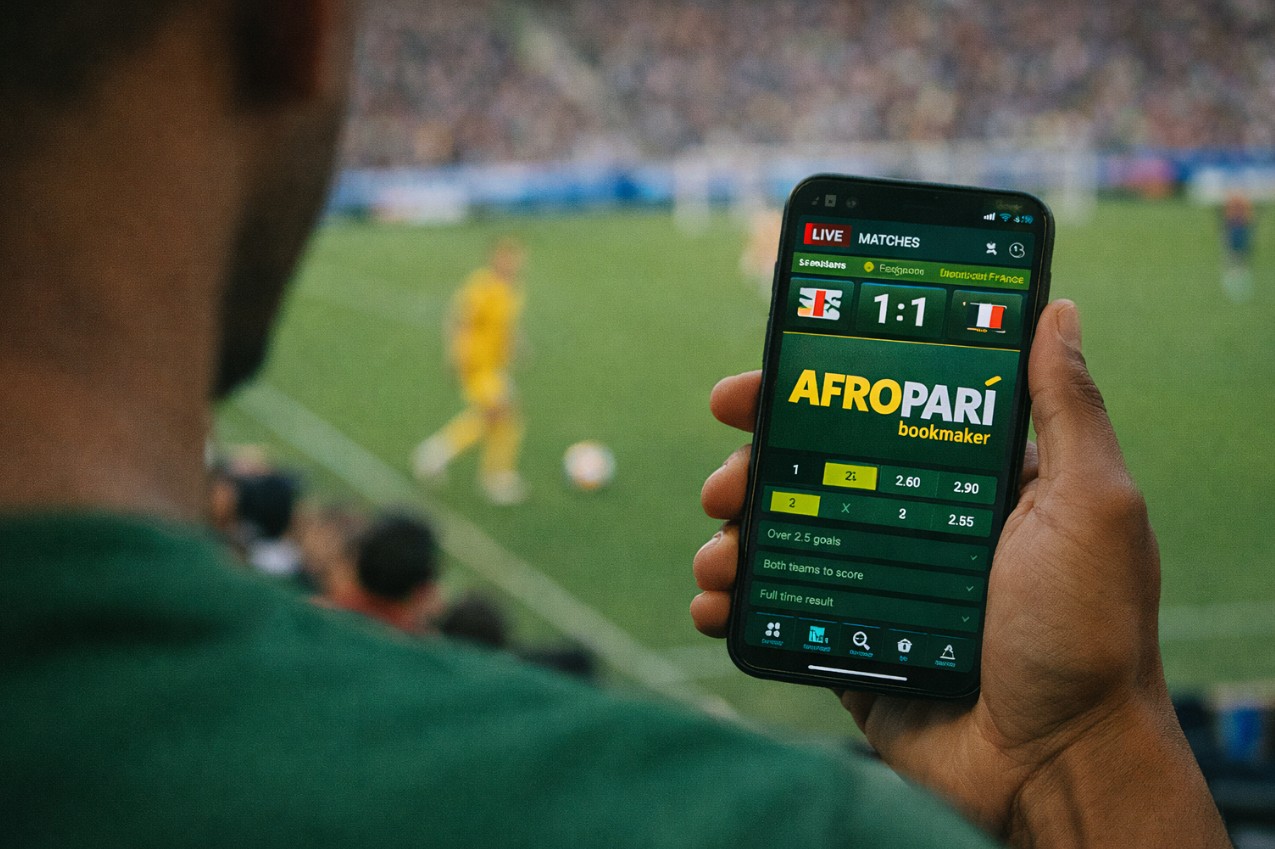The Financial Impact of Global Football Brands
Global football brands are no longer just sports t

Global football brands are no longer just sports teams; they are powerful economic entities with a substantial influence on global markets. Clubs like Manchester United, Real Madrid, and FC Barcelona have transcended their local roots to become worldwide brands, boasting millions of fans, lucrative sponsorship deals, and significant media rights contracts. This article examines the financial impact of these football brands, exploring their revenue streams, their effect on local and global economies, and the growing financial disparity between football’s elite clubs and their smaller counterparts. Additionally, the influence of these brands can be seen in various industries, including online gaming, where platforms like Starzino Slots capitalize on the global popularity of football to attract a broader audience.
The Rise of Global Football Brands
The transformation of football clubs into global brands did not happen overnight. Historically, clubs were primarily local institutions, deeply embedded in their communities. However, the commercialization of football, particularly from the late 20th century onwards, marked the beginning of a new era.
Key factors that contributed to the rise of global football brands include:
- International Success: Winning prestigious tournaments such as the UEFA Champions League or FIFA Club World Cup elevated certain clubs to global prominence.
- Iconic Players: The presence of legendary players like Pelé, Diego Maradona, and Cristiano Ronaldo helped clubs reach international fame.
- Strategic Marketing and Partnerships: Clubs began to recognize the potential of international markets. Strategic partnerships with global brands and the launch of official merchandise lines were crucial in building a global fanbase.
- Digital and Social Media Presence: The advent of digital media allowed clubs to reach global audiences directly. Clubs now engage millions of fans worldwide through social media platforms, further solidifying their global brand status.
Financial Aspects of Global Football Brands
Global football brands are characterized by diverse and robust revenue streams. These include:
1. Sponsorship Deals
- Major Kit Deals: Clubs like Manchester United and Real Madrid have secured kit deals worth hundreds of millions with brands like Adidas and Nike.
- Stadium Naming Rights: Some clubs have monetized their stadiums by selling naming rights, generating significant annual revenue.
2. Merchandising
- Global Merchandise Sales: Clubs capitalize on their global fanbase by selling jerseys, apparel, and other branded merchandise. For example, FC Barcelona’s merchandise sales contribute substantially to their annual revenue.
- Online Stores and Global Distribution: With the rise of e-commerce, clubs have expanded their reach by establishing online stores that ship worldwide.
3. Media Rights
- Television Rights: The sale of television rights, especially for leagues like the English Premier League, brings in billions of dollars. These rights are often sold internationally, allowing clubs to tap into new markets.
- Digital Streaming: As digital platforms gain popularity, clubs are exploring streaming rights as an additional revenue source.
These financial strategies not only sustain the clubs but also fuel their growth, enabling them to reinvest in player acquisitions, facilities, and global marketing efforts. The financial impact of these brands extends beyond the clubs themselves, influencing local economies through job creation, tourism, and infrastructure development.
Global vs. Local: The Financial Disparity
The financial success of global football brands has created a significant disparity between elite clubs and smaller, less commercially powerful teams. This gap is evident in several key areas:
- Revenue Disparity: Top clubs generate exponentially more revenue than smaller teams, primarily due to their global appeal and diversified income streams.
- Talent Acquisition: Financially powerful clubs can attract and retain top talent, further strengthening their competitive position. In contrast, smaller clubs struggle to compete for high-profile players.
- Market Influence: Global clubs have a significant influence on the football market, from player transfer fees to commercial deals. Smaller clubs often have to adapt to market conditions set by these giants.
Table: Revenue Comparison Between Global and Local Clubs
| Club | Annual Revenue (2023) | Major Revenue source |
|---|---|---|
| Manchester United | $715 million | Sponsorships, Media Rights |
| Real Madrid | $713 million | Merchandising, Media Rights |
| Local Mid-Tier Club (Example) | $60 million | Local Sponsorships, Ticket Sales |
Case Studies
To better understand the financial impact of global football brands, it is useful to examine specific examples of clubs that have successfully established themselves as economic powerhouses. These case studies illustrate the strategies employed by these clubs and their broader financial influence.
1. Manchester United
Manchester United is one of the most commercially successful football clubs in the world. The club’s global brand was built on a foundation of consistent domestic and international success, iconic players like David Beckham and Cristiano Ronaldo, and strategic marketing efforts.
- Revenue Streams: Manchester United generates significant income from sponsorship deals, including a long-term kit partnership with Adidas valued at approximately $1 billion over 10 years. Additionally, the club has numerous global partners across various industries, contributing to its annual revenue of over $700 million.
- Global Fanbase: The club boasts one of the largest global fanbases, with millions of followers on social media platforms. This broad fan engagement drives merchandise sales and increases the value of media rights deals.
- Economic Impact: Manchester United’s economic influence extends beyond the club itself. The club’s success has a significant impact on the local economy in Manchester, contributing to job creation, tourism, and infrastructure development.
2. Real Madrid
Real Madrid is another club that has successfully leveraged its brand to become a financial juggernaut in the football world. Known for its Galácticos policy, which involves signing the world’s best players, the club has become synonymous with star power and success.
- Revenue Streams: Real Madrid’s revenue is heavily driven by merchandising, with the club’s iconic white jersey being one of the best-selling football shirts globally. Media rights also play a crucial role, with the club earning substantial sums from broadcasting deals, especially for its matches in the UEFA Champions League.
- Stadium and Facilities: The club’s Santiago Bernabéu Stadium is not just a sports venue but also a major source of revenue through tours, events, and naming rights. The ongoing renovations are expected to further enhance its revenue-generating capabilities.
- Global Reach: Real Madrid’s brand is recognized worldwide, with a strong presence in key markets such as Asia and the Americas. This global reach ensures a steady flow of income from diverse sources.
3. Paris Saint-Germain (PSG)
Paris Saint-Germain (PSG) offers a more recent example of a club that has rapidly ascended to global brand status, largely due to strategic investments and high-profile signings.
- Revenue Streams: PSG’s rise to prominence is closely tied to its financial backing from Qatari investors, which has enabled the club to sign superstar players like Neymar and Kylian Mbappé. These signings have significantly boosted the club’s marketability and global appeal.
- Sponsorship and Branding: The club has struck lucrative sponsorship deals, including a long-term agreement with Nike and a high-profile partnership with the Jordan brand, which has helped PSG establish a unique identity in the football world.
- Global Fan Engagement: PSG has effectively utilized social media to engage with a younger, global audience, contributing to its rapid brand growth and increased merchandise sales.
The Future of Global Football Brands
The future of global football brands is likely to be shaped by several key trends and challenges. Understanding these factors is crucial for both the growth of these brands and the overall health of the football industry.
1. Emerging Markets
- Asia and North America: As football’s popularity continues to grow in regions like Asia and North America, global clubs are increasingly focusing their marketing efforts on these markets. Pre-season tours, localized content, and targeted merchandise are just some of the strategies being used to tap into these lucrative markets.
- Opportunities for Growth: These emerging markets present significant opportunities for revenue growth, particularly in terms of broadcasting rights, sponsorships, and merchandise sales. Clubs that can successfully penetrate these markets are likely to see substantial financial benefits.
2. Sustainability Concerns
- Financial Fair Play: The introduction of Financial Fair Play (FFP) regulations by UEFA has prompted clubs to be more mindful of their spending. While FFP aims to promote financial stability, it also raises questions about the long-term sustainability of the current business model, particularly for clubs heavily reliant on external investment.
- Environmental Sustainability: As global attention shifts towards environmental issues, football clubs are increasingly expected to adopt sustainable practices. This includes reducing their carbon footprint, implementing green stadium initiatives, and promoting environmental awareness among fans.
3. Technological Influence
- Digital Transformation: The digital revolution is reshaping the way football is consumed, with clubs increasingly investing in digital platforms to engage with fans. From streaming services to virtual reality experiences, technology is creating new revenue streams and enhancing fan interaction.
- Data Analytics: The use of data analytics is also becoming more prevalent, not just in player performance but in business operations as well. Clubs are leveraging data to optimize ticket sales, merchandise offerings, and fan engagement strategies.
Conclusion
Global football brands have become powerful economic entities with far-reaching influence. Through strategic marketing, international success, and diversification of revenue streams, clubs like Manchester United, Real Madrid, and PSG have not only cemented their status as global brands but have also had a significant impact on local and global economies.
However, this success comes with challenges, particularly the growing financial disparity between football’s elite and smaller clubs. As the football industry continues to evolve, clubs must navigate emerging markets, sustainability concerns, and technological advancements to maintain their financial dominance.







